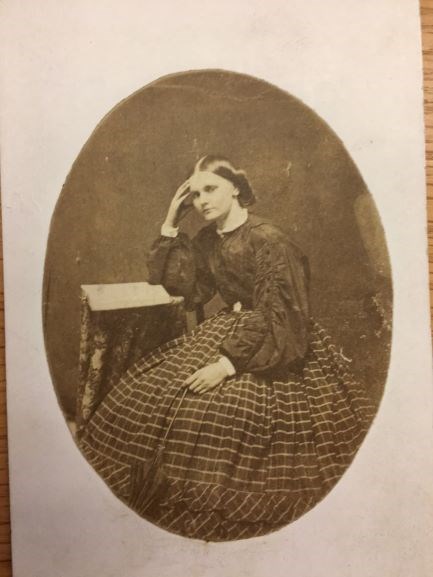Did you know that Wellington County may have been home to Canada’s first woman novelist? According to local historian Hazel Mack, Mary Leslie’s The Cromaboo Mail Carrier, 1878, was the first novel published in Canada West. When I first learned of this, I immediately questioned its accuracy. Why was this not more celebrated in Guelph history? In my attempt to answer this question, I researched the Canadian literary scene where I learned this was an extraordinarily difficult time for Canadians – especially women – to make their way as authors.
My discovery of Mary Leslie in 2016 led me to ongoing research into how she lived her life and why she was forgotten. Fortunately, the Archives of Ontario preserves most her records, including several boxes of papers and photographs. In exploring her numerous letters, drafted manuscripts, and family records, I discovered a vibrant woman, who was an active member of her community and held a passion for storytelling.
We can also thank Guelph’s David J. Knight for calling attention to Leslie in 2016 by bringing her novel back into circulation after its controversial debut. The 100-copy first run of the novel, published under the pseudonym, James Thomas Jones, was almost immediately pulled from distribution after uproar from locals in Erin who were not happy with their thinly veiled portrayal. Despite her novel’s unique depiction of mid-nineteenth century rural Ontario and its unconventional perspective on class, gender, and romance of her time, little has been done to establish Leslie as a figure in Guelph’s history.
Born in Guelph Township of Wellington County in 1842 to a relatively well-off family, Leslie was accustomed to a level of comfort uncommon to her area. She maintained close relationships to her parents, Elizabeth Griffin and John Thomas Leslie as well as her older sister, Elizabeth Clarke. Perhaps as a result of this support, Leslie never married and chose instead to devote her life to pursuing various vocations that demonstrated her passion for storytelling. The financial security and personal connections provided by her familial background allowed her to travel to England and America in attempts to establish herself as an author. However, Leslie ultimately made Southern Ontario her primary location, living in Belwood, Elora, Rockwood, and Toronto. Unfortunately, questionable financial decisions and poor economic times eventually resulted in the loss of her family home, which had been left to her as a means of security.
Leslie was also a devoted painter and sketcher, often exchanging lessons and pictures for goods and services. She was an active member of her community, engaging in matters that she believed to be important, including organizing government support for vulnerable elders and cleaning towns. Leslie died in Toronto from influenza on March 1, 1920.
What strikes me most about Leslie is her strength of character and sense of individuality. She faced numerous barriers in her life as an unmarried woman writer, and some of the decisions she made regarding her financial situation and authorial choices added more obstacles. Although her work did not gain much recognition, as a woman who strove to make her way in a male-dominated world, she is a success. Leslie managed to maintain her autonomy over where she lived, who she interacted with, and how she spent her money. She is an important Canadian literary figure not for what she produced, but for how she chose to overcome the obstacles that she faced. While Leslie may be among the early women who published stories in Canada, it is not necessarily important to distinguish her as the first. Instead, what is more important is who she was and how she is remembered.“I have a few rules of my own for literature which I never deviate from…I will not write down to the public taste or conform to a lowland…for the sake of popularity or money: - 2nd I never publish without being paid for what I write, but I am not greedy of gain, It is from necessity that I earn money” – Letter from Mary Leslie to Mr. Simonski, n.d.: held at the Archives of Ontario
For more on Mary Leslie and her struggles for literary success, check out this article https://doi.org/10.33137/ijournal.v6i2.36459
Photo Credits:
Portrait: Mary Leslie, age 21, Archives of Ontario collection
This Content is made possible by our Sponsor; it is not written by and does not necessarily reflect the views of the editorial staff.

